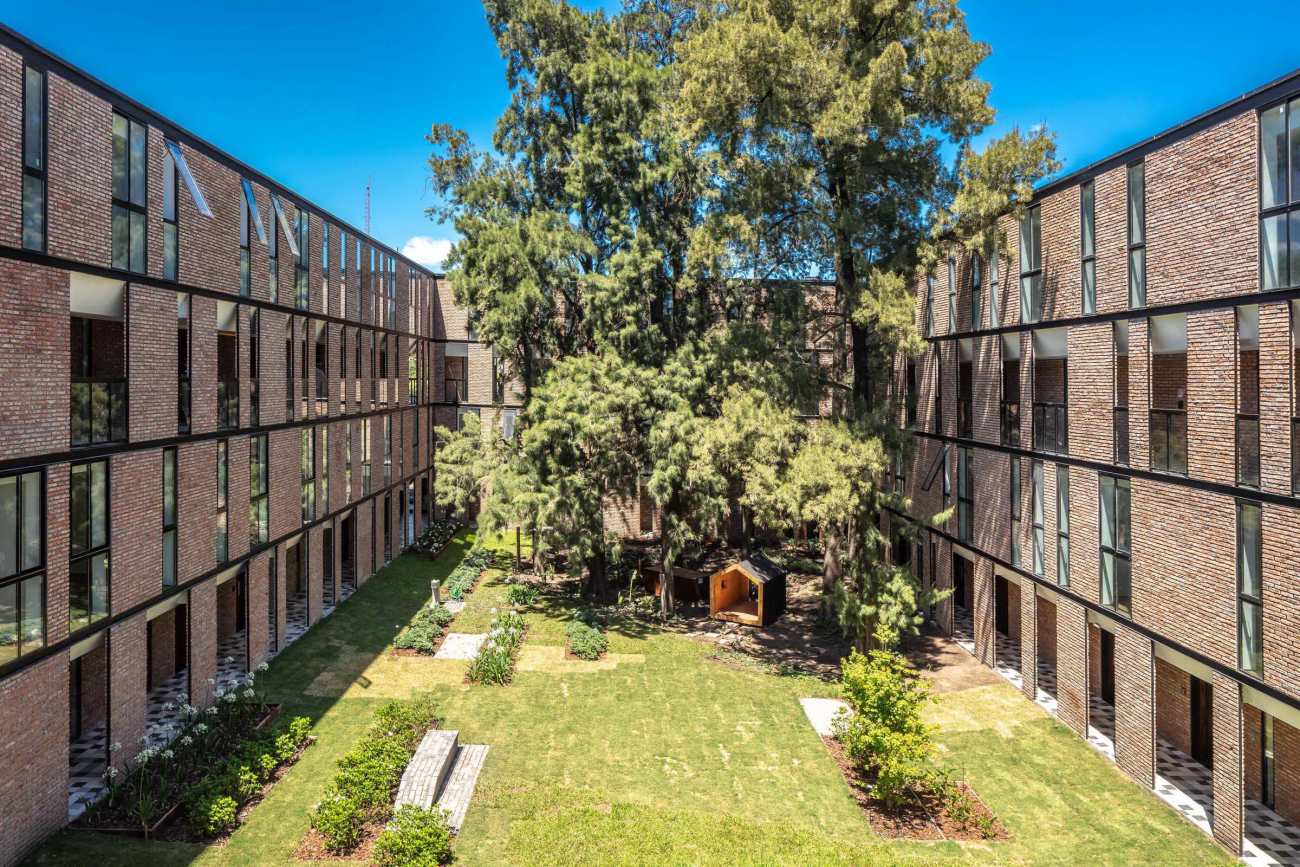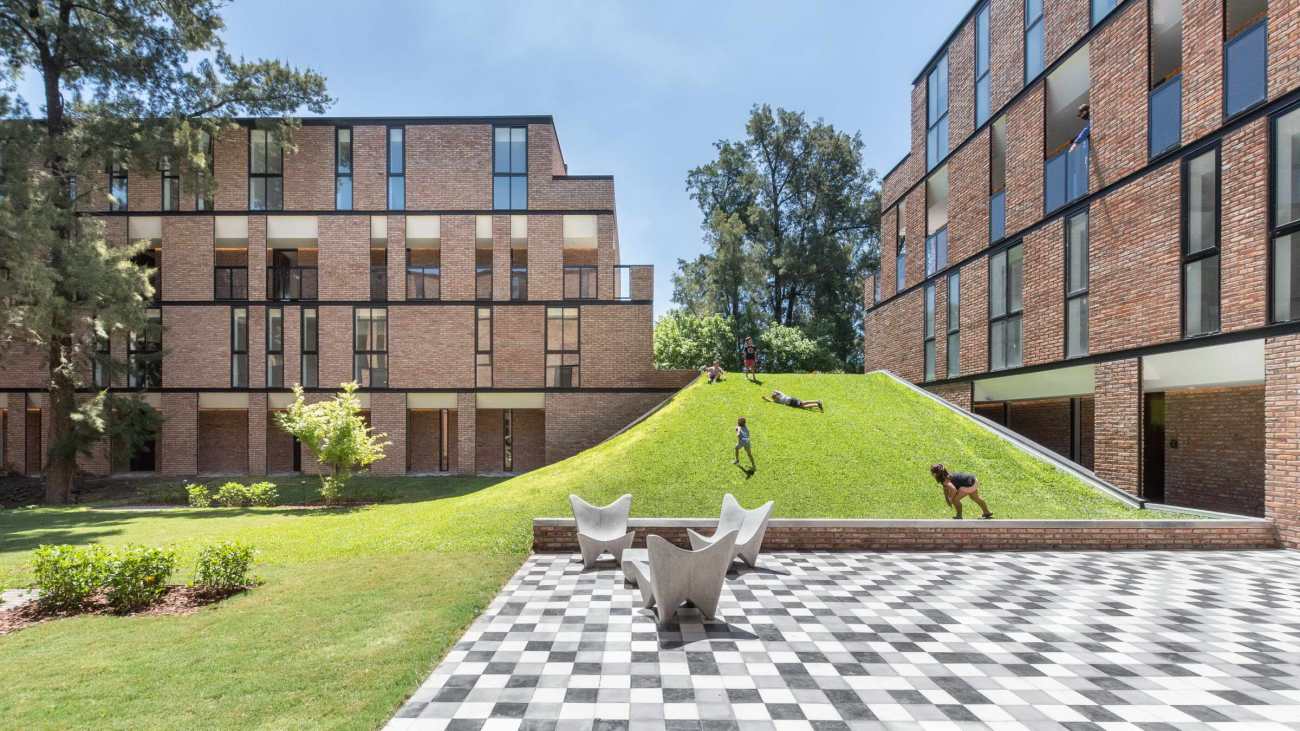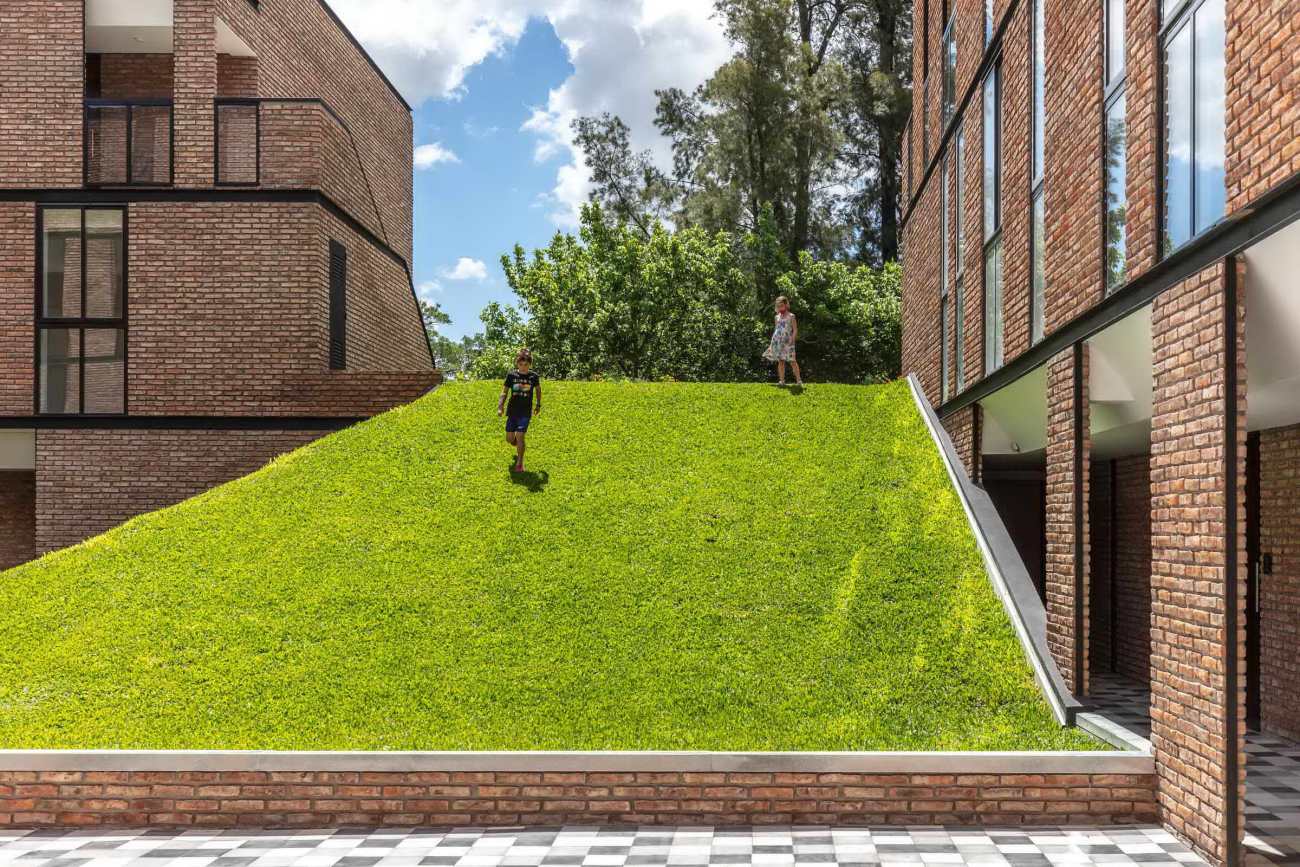| 公司: | Ça Arquitectura | 类型: | 建筑 |
|---|---|---|---|
| 地区: | 阿根廷 | 标签: | 公寓 |
项目COPA位于布宜诺斯艾利斯的大都市郊区,围绕着一个中央回廊结构,每个单元都可以进入。在这座设计有不同程度的亲密空间的建筑中,私人和公共空间之间的对立是模糊的。 建筑可以被理解为一种社会化的人工制品,为创建微型社区提供空间。在这个意义上,集体生活和混合使用的建筑,如COPA,既是这些生物群体发展的舞台,也是其固有的。
Located in the metropolitan outskirts of Buenos Aires, COPA is structured around a central cloister and can be accessed by every unit. The dichotomy between private and public space is blurred in this building designed with spaces with varying levels of intimacy. Architecture can be understood as a socializing artifact that provides spaces for the creation of microcommunities. In this sense, collective living and mixed used buildings, like COPA, are both a stage for and intrinsic to the development of these biological groupings.
新的居住模式解构了核心家庭的概念,它产生了特定类型的个人,知道如何应对特定的生产模式。这些新模式促使我们重新考虑集体住房和社区生活的意义。住房应该不仅仅是为所谓的同质群体提供庇护装置的迭代,无论是否经过修改。相反,住房包括这些不是私人的、但高度亲密的空间内的一切。
New modes of habitation deconstruct the idea of a nuclear family that produces particular types of individuals that know how to respond to given modes of production. These new modes push us to reconsider the meaning of collective housing and community living. Housing should be more than the iteration, with or without modifications, of a sheltering device for supposedly homogenous groups. Rather, housing comprises everything that is within these, not private, but highly intimate spaces.
COPA的底层是对传统建筑形式--回廊的重新诠释,并按照严格的模块系统设计,后来被自由使用,以赋予建筑运动和特征。虽然我们使用的是现代词汇,但审美语言是乡土的,这也有利于与当地习惯于这种类型工作的劳动力一起施工。烧制时间或多或少的标准砖在整个工程中以不同方式使用,利用其表现力。在回廊内有一个公园,它整合了自然植被,为社区居民提供了一个公共空间。北部的角落是非物质的,以允许阳光照射中央空间,而地形允许空间的连续性,产生新的情况和空间性。
The ground floor of COPA is a reinterpretation of a traditional architectural form, the cloister, and is designed following a rigorous modular system that is later used freely to grant movement and character to the building. Although we use a modern vocabulary, esthetic language is vernacular and is what facilitates construction with a local workforce accustomed to this type of work. The standard brick with more or less firing time is used in different ways throughout the work, exploiting its expressive qualities. Within the cloister there is a park that integrates the natural vegetation and presents itself as a public space for the inhabitants of the community. The northern corner is dematerialized to allow sunlight to flood the central space, while the topography permits spatial continuity, generating new situations and spatialities.
 | 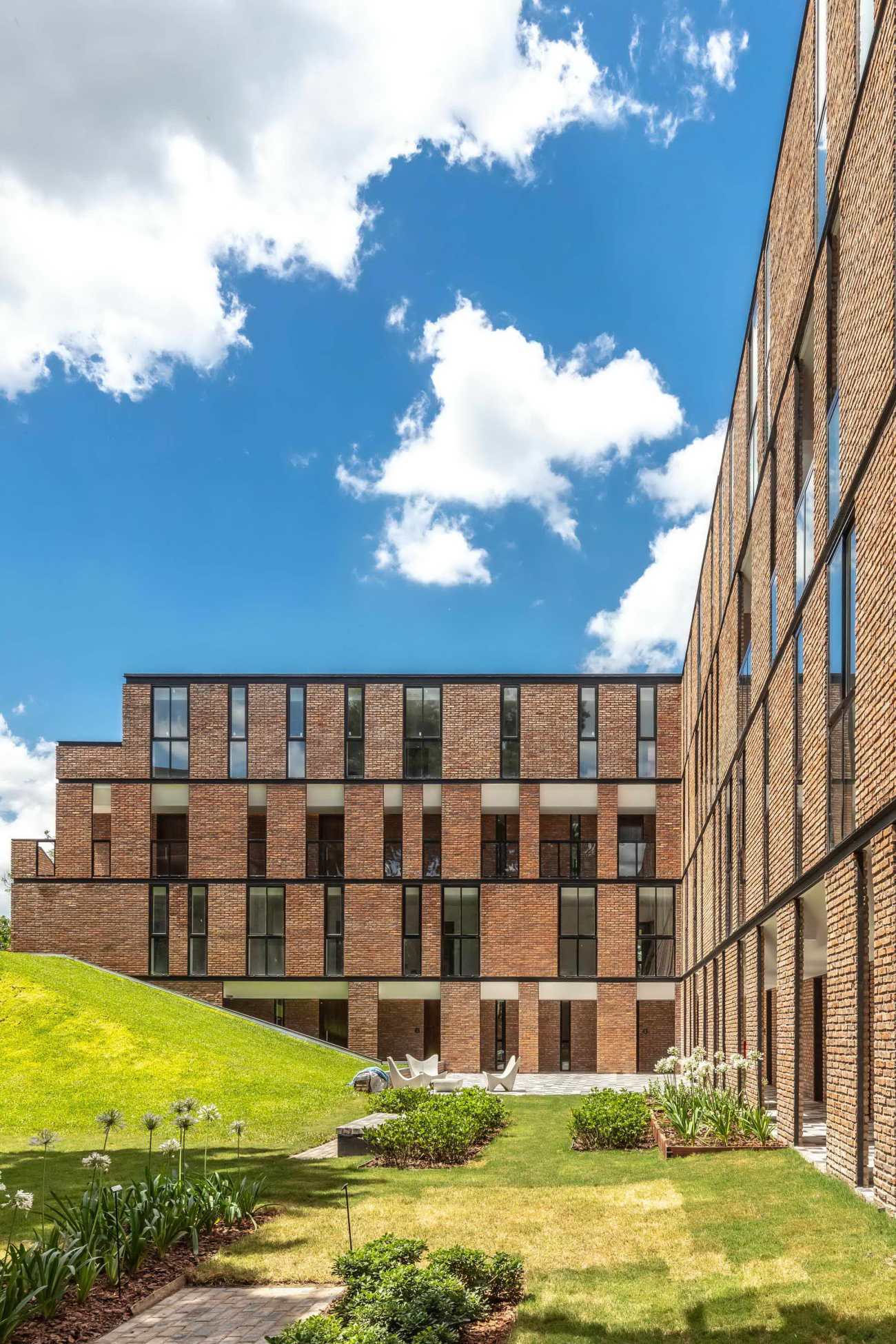 |
回廊是一个经典的建筑形式,它的组成部分和逻辑是用现代词汇重新配置的,并对特定的需求作出回应。循环大厅和每个单元都向中央天井开放,使其具有真正的公共空间的特征,供居民之间接触。这种组织方式利用了地形的特殊性;COPA是围绕着一片大树林建造的,并且在原有的自然形式和那些被建筑修改过的自然形式之间有一种互利的关系。
The cloister is a classic architectural form, its components and logic are reconfigured with a modern vocabulary and respond to particular needs. The circulation loggias and each unit open onto the central patio, endowing it with the character of a true public space for encounters between inhabitants. This organization exploits the particular characteristics of the terrain; COPA is constructed around a large grove of trees and has a mutually beneficial relationship between the preexisting natural forms and those modified by the architecture.
 |  |
 |  |
The building is nurtured by the vegetation and, simultaneously, protects it. The landscaping generates an ecosystem that preserves the preexisting species and shelters nesting birds and insects. The added vegetation accompanies this ecosystem and is adapted to local climatic conditions, facilitating maintenance and reducing the consumption of water and chemicals for maintenance. The park contains a composting system that provides organic soil to the community garden, located farther in the upper level of the park. The constructive system, with double walls, dvh glass, isolated subfloors and covered walkways with eaves, significantly reduces thermal gain in summer months and losses in the winter.
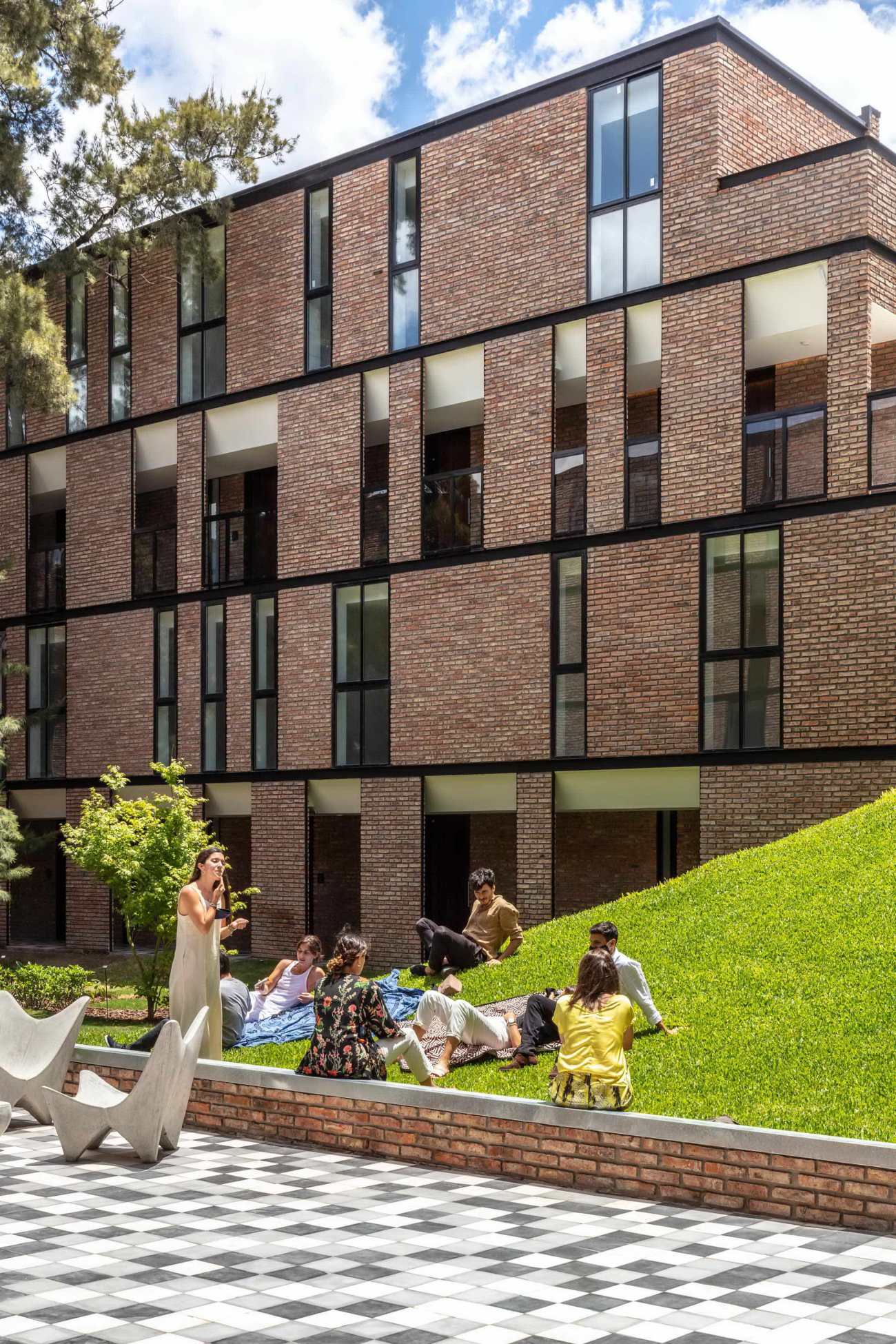 |  |
COPA is situated in a segment of the metropolitan area that provides easy access to both highway and the train leading to the city center. These are the most important transportation routes in the region and are used broadly across social sectors. The project understands the reality of a degraded, yet highly connected suburb and offers a way of living between the congestion of the city and the vastness of the sprawling suburban city. Mid-density buildings that do not generate large conglomerates or generate immense infrastructure costs can provide suburban housing on a private lot for the middle class. The concept is a mid-density city that does not represent an infinite urban stain, with all the accompanying problems of energy consumption, nor an extremely concentrated city that focuses another class of problems, such as the spread and emergence of disease in high density populations. COPA is a disciplinary reflection on contemporary modes of habitation, the role of the periphery and the role of common spaces in the creation of microcommunities.
Project Name: COPA
Architectural office: Ça Arquitectura
Principal architect: Juan Micieli Arch.
Website: www.ciudadyarquitectura.com.ar
E-mail: administracion@ciudadyarquitectura.com.ar
Country of office: Argentina
Year of construction: 2021
Área: 7.200 m2
Location: Moreno, Buenos Aires, Argentina
Main Architect: Juan Micieli Arch.
Development: Manuel Micieli BEc.
Design team: Ignacio Molinari, Arch.; Edgardo Rojas, Arch.; Christian Naula, Arch.; Patricia Tejera, Arch.; Florencia Ferreyra, Arch.
Structural design: Roberto Alfie Arch.
Construction: Juan Micieli, Arch.; Ana Escobar, Jose Torroglosa, Neo Park, Florencia Barata
Construction: Pedro Peirano, Arch.; Ignacio Molinari, Arch.; Gustavo Chaparro.
Photographers: Gonzalo Viramonte, Federico K.
Website Photographer A: @gonzaloviramonte
Website Photographer B: @fedekufoto
更新日期:2021-06-25 12:31:07
非常感谢 Ça Arquitectura 带来的精彩项目, 查阅更多Appreciations towards Ça Arquitectura for sharing wonderful work on hhlloo. Click to see more works!
